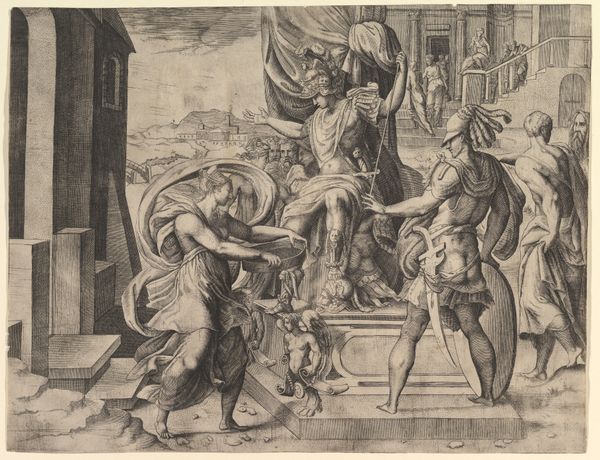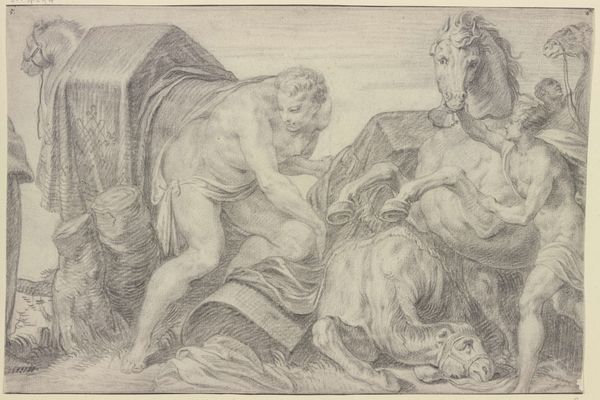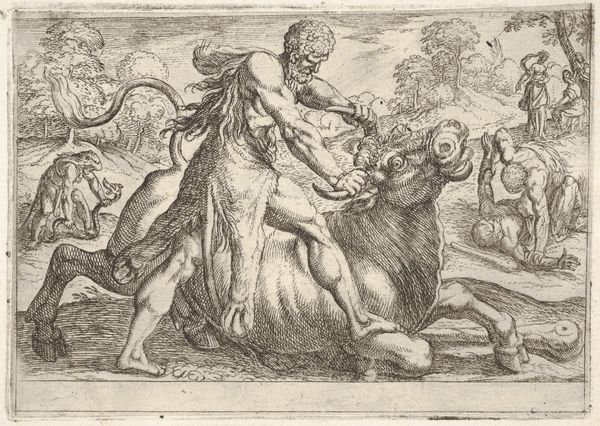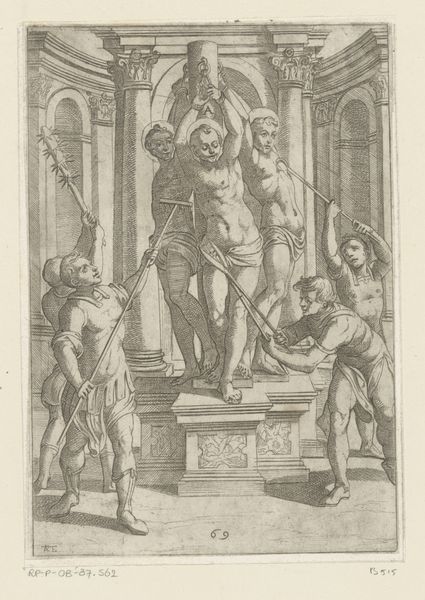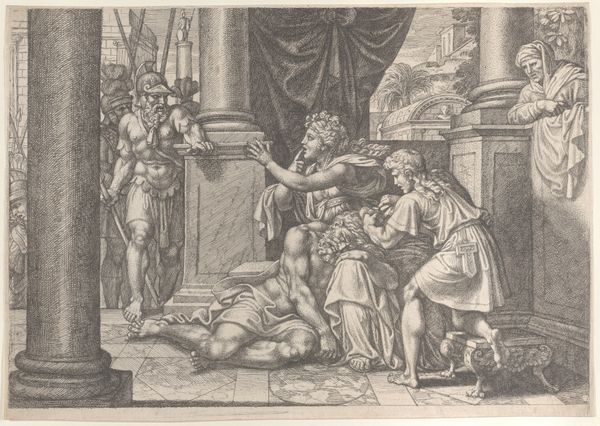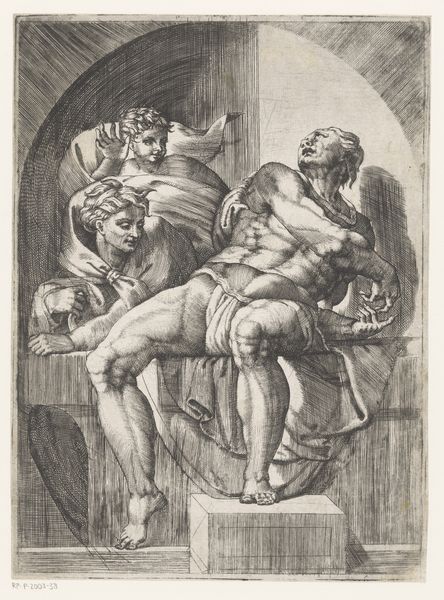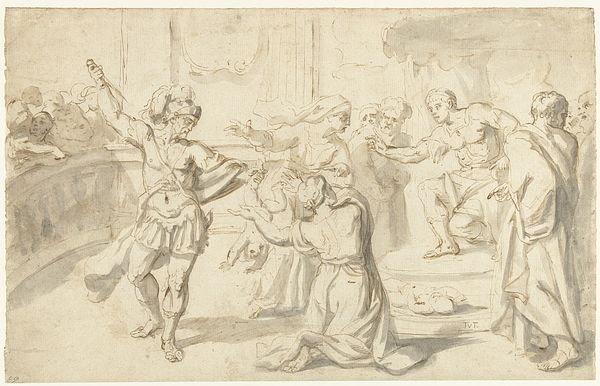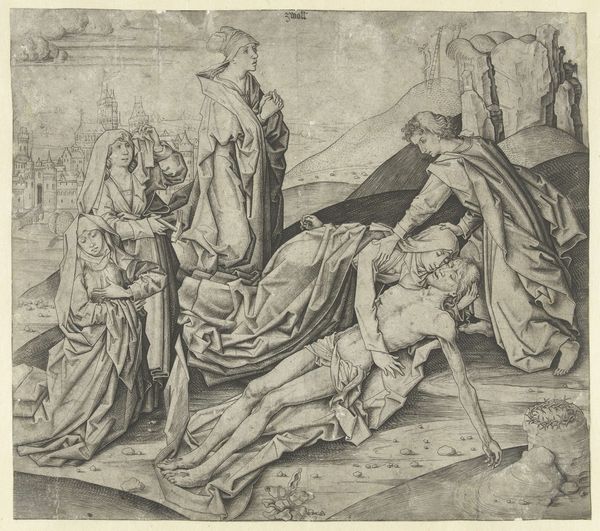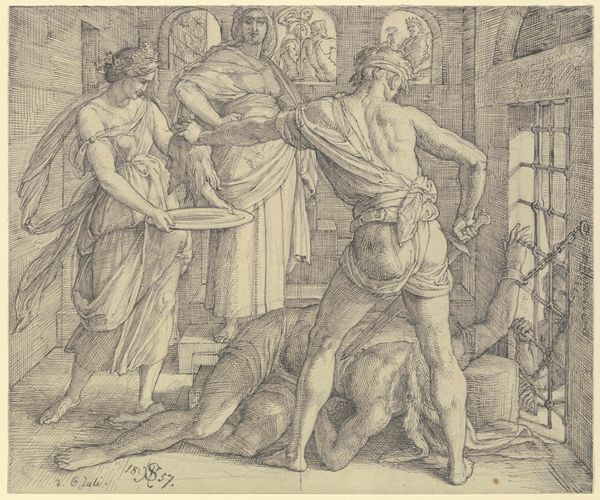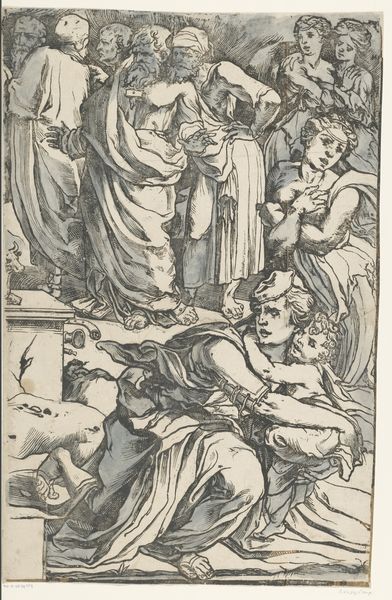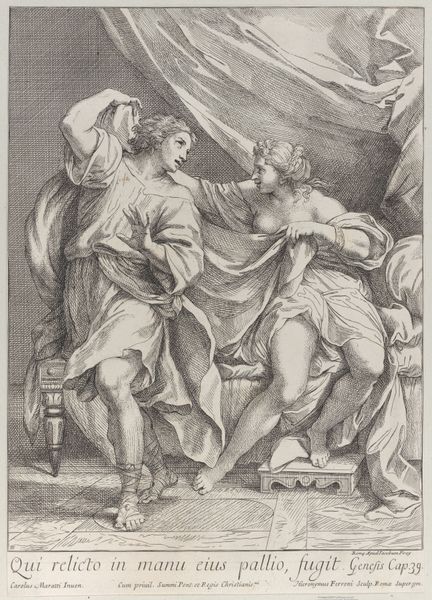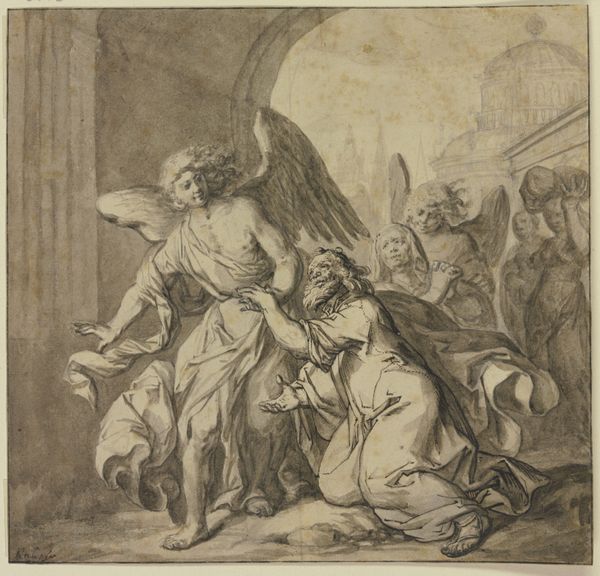
drawing, pencil, chalk
#
drawing
#
baroque
#
landscape
#
figuration
#
pencil
#
chalk
#
14_17th-century
#
history-painting
#
realism
Copyright: Public Domain
Curator: This drawing from around 1650 by Abraham van Diepenbeeck depicts The Adoration of the Kings. It is currently housed here at the Städel Museum. Editor: It’s predominantly rendered in pencil and chalk, lending it a hazy, dreamlike quality. The composition seems deliberately crowded, with a mass of figures, animals, and objects vying for space. Curator: Indeed. Diepenbeeck, influenced by Rubens, here employs the Baroque style to emphasize the grandeur and the exoticism of the journey to Bethlehem, while capturing a holy, historical moment. We must consider that the "realism" of such an image is socially conditioned and portrays the exoticism through a european point of view. Editor: Agreed. The artist certainly aimed to capture the awe of the event, not necessarily to adhere to photographic realism. Technically, it is interesting how Diepenbeeck layers his strokes to convey both the texture of the garments and the imposing size of the elephant. The contrast created by his bold use of light and shadow is especially notable. Curator: Also, we need to contextualize images such as this. Art, and depictions of faith particularly, served powerful functions in solidifying the religious and political authorities of the time. It reinforced colonial worldviews by representing different people according to stereotypical exotic imageries. Editor: Absolutely. This prompts a reflection on art’s active role in shaping public belief. However, I cannot overlook how he also managed to suggest movement and activity despite it being a static image. Curator: That tension is ever present when analyzing historical images like this one. Images reflect a social environment, they do not merely represent reality. It reveals not just religious devotion, but also societal power dynamics and constructed perceptions of reality during the 17th century. Editor: Seeing these familiar biblical narratives examined through the lens of material composition and artistic choice, offers a rich new perspective on their emotional and cultural weight. Curator: Understanding art as a cultural mirror is, I believe, the best approach we can take in the museum, to analyze our past.
Comments
No comments
Be the first to comment and join the conversation on the ultimate creative platform.
